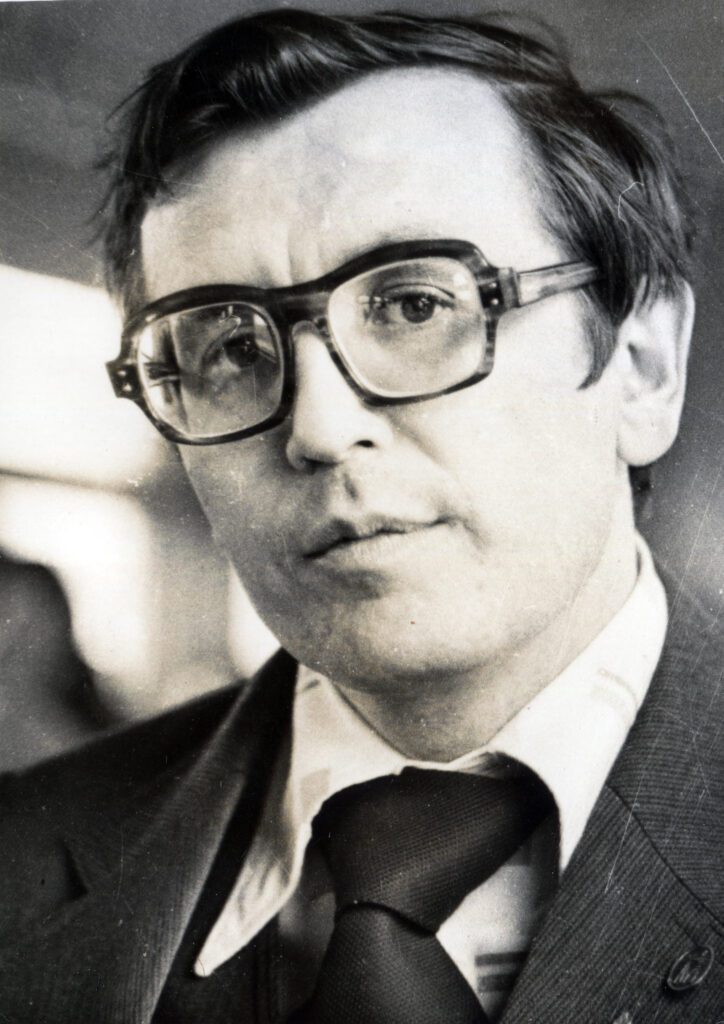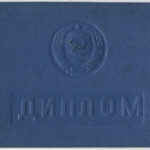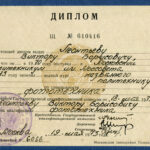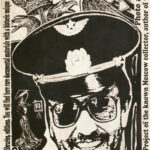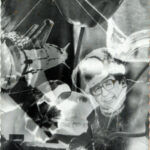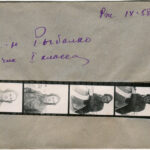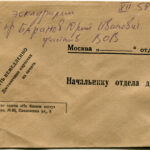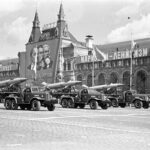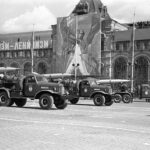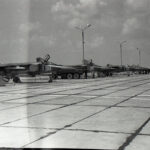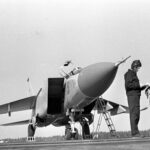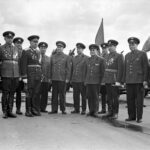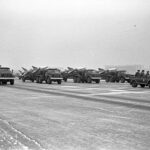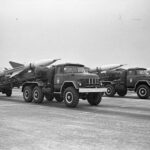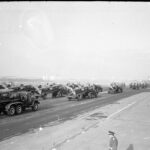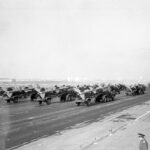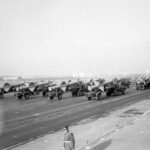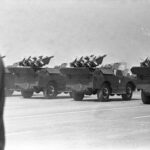- Cold War travel guide and encyclopedia based on the Author’s archives in Paris
Photographer Viktor Leontiev Borisovich (“Levibor”) and his collection.
Viktor Borisovich Leontiev, known under his creative pseudonym of “Levibor” from the abbreviation of his surname, name and patronymic, was an outstanding photo artist and documentary photographer of the Soviet era, born in 1946. Levibor’s photographs, camera equipment, personal belongings, and documents form a unique collection within the Author’s wider Cold War collection. Leontiev’s extensive and comprehensive collection of Soviet photographic negatives, both officially and unofficially taken by himself and his friends, make it a valuable photographic chronicle of the Soviet perspective on the Cold War. The Author hopes to see this collection donated as part of an archive or museum in France or the USA, especially as his photographs are beginning to lose their ITAR-TASS copyrights upon entering the public domain.
During Soviet times, photographing military objects and equipment was strictly prohibited. The only exceptions were for approved photographers, acting under orders from military and Communist Party leadership to supply photographs for the design of “visual agitation” (propaganda posters), or for newspaper articles. Each department had its own press organ. The main newspaper of the Ministry of Defense of the USSR was the newspaper “Krasnaya Zvezda” (Red Star), headquartered in Moscow. The Moscow Air Defense Military District also had its own newspaper called “Na Boevom Postu” (At the Battle Post).
Viktor Leontiev became a correspondent and photographer of At the Battle Post in 1971. For decades, Leontiev photographed parades and celebrations on Red Square, demonstrations at military and civilian airfields, and portraits of Soviet military personnel. His collection spans soldiers and officers, signalmen, missiles, aircraft, and the various combat posts of the defenders of the motherland.
He embarked on constant business trips to other cities, villages, and remote military installations to capture good, illustrative pictures for At the Battle Post. According to Leontiev himself, “I traveled around everything within a radius of 400 kilometers from Moscow.” 400 kilometers is about the border of the Moscow Air Defense District.
Leontiev assembled the photographs taken over his lifetime into a set of special albums. Some were for the photos published in the newspaper, others were set aside for those never published. This is how the Author’s Leontiev collection was created. Many years ago, while communicating with his work colleagues and senior comrades, Leontiev began to collect photographs by and of his friends. One such friend, his mentor and teacher Boris Yaroslavtsev was for a long time the “court photographer” of Nikita Khrushchev, and before that a photographer for the many legendary units of the Soviet World War II Air Force. Leontiev’s friendship with Yaroslavtsev made it possible to preserve the latter’s sizeable collection within Leontiev’s. Thus, Leontiev’s collection of photographs includes not only his own work, but also the work of many of his older friends and predecessors between the 1940s and 1960s.
The restructuring (“perestroika”) of Mikhail Gorbachev, the reduction in the size and budget of the Soviet armed forces, the decline in nuclear and military tensions in the mid to late 1980s, and the personal need to earn money outside of the faltering Ministry of Defense, led Leontiev to move into the field of culture and art. Officially continuing to photograph rockets and planes, Leontiev began to also work with the Bolshoi Theater in Moscow. The Bolshoi Theater is the preeminent stage for dance, opera, and theater in Moscow, famous all over the world. Leontiev developed a style of combined photographs, exposing the same film twice in two different scenes so as to artistically superimpose and combine his subject matter. (See the photo of a Soviet satellite overlaid with Leontiev’s self portrait.) Leontiev’s artistry captured appearances on the Bolshoi stage, peered behind the scenes at the Theater, ranged throughout the cultural, military, and scientific centers of Moscow, and even made it into the Kremlin Palace of Congresses (Now the State Kremlin Palace).
At the end of the 1980s, many outstanding figures of Russian culture and art, especially artists, left Soviet Russia and emigrated to the United States. There were political and economic reasons for this, but most importantly, the United States’ promise of a free country of free people, where everyone could realize themselves without an overbearing nomenklatura system, communist party and government, attracted creative artists that were often operating outside the bounds of approved Soviet cultural expression.
In response to this, Leontiev assembled a large collection of own photos associated with theater artists in the last years of the Soviet Union. Most of the photographs in this era have their own marks: seals, stamps and autographs, sometimes funny, reflecting the atmosphere of the late 80s and early 90s.
Biographic Chronology of Viktor Leontiev.
The information below has been collected from the surviving personal documents of Viktor Leontiev in the collection.
Viktor Borisovich Leontiev was born on May 9th (Victory Day, the main Soviet holiday) in 1946 in Moscow.
In 1961 he graduated from 8th grade, completing his compulsory secondary schooling, and in October he was awarded the badge “Tourist of the USSR.”
In January 1962, at the age of 15, he worked as a fitter and assembler at the ZIL automobile plant (former ZIS, Stalin Plant) in Moscow. He joined a trade union nicknamed as a labor school of the communism. In the same month, he joined the Komsomol (All-Union Leninist Young Communist League) at the All-Russian Institute of Light Alloys. He graduated from industrial technical courses at the ZIL automobile plant.
In December 1962, he made a hiking trip in the Crimea from the town of Bakhchisaray to Yalta.
In November 1965, he was registered with the defense enterprise “Post Box N 769” of the Design Bureau of the Ministry of Aviation Industry, which gave him protection from conscription into the army.
In March 1967, he went skiing on the Kolsky (Kola) Peninsula. In May he received a certificate that he had completed a ski tourism course.
From November 1967 to June 1969 he served at the top secret communication center of the USSR General Staff’s “Rubin” military unit 2581 in the city of Chekhov, Moscow Region. He had a security clearance of access to the military facilities and documents. His military rank was that of a private in the communications section.
In November 1970, he began to take courses at the Lecture Hall on photography and journalism and graduated in May 1972 with a diploma in specialty photography.
In 1970 he entered the Polytechnic and in May 1973 successfully graduated with a degree in photography, receiving a diploma and the right to wear a special badge.
Now having a security clearance for working with secret documents in the Soviet army, upon completion of the technical school courses he began working as a photographer and correspondent for the Ministry of Defense’s daily newspaper for the Air Defense Forces’ Moscow Military District, At the Battle Post.. He worked for this newspaper until the end of the 90s , constantly traveling on business trips to military and air defense units within the Moscow Military District.
From the first days of Mikhail Gorbachev’s Perestroika, as additional work he began to photograph the artists and performers of the Bolshoi Theater using combined photography and photo editing.
- Technical College Diploma, specialty photographer
- Photographic Equipment Technician Diploma
Victor Leontiev Cold War collection and USSR photo archive
Description and examples.
- Cold War Photo Archive Flyer 2000
- Combined photo printing, Leontiev and the soviet spaceship
- Soviet pilot 1st class Captain Rybalko
- service envelope with negatives for printing
Cold War photo gallery of Viktor Leontiev, Soviet Army and USSR (Description and examples).
- Military parade on Red Square, Moscow, 70s. Air defense S-25 (NATO SA-1 Guild) missiles, N1
- Military parade May 9 Victory Day. Long live Marxism-Leninism, N2
- Airfield and aircraft, N3
- The pilot at the plane, the technician in service uniform, N4
- Major General of the Air Force and officers, military parade rehearsal, N5
- Rehearsal of the military parade, embankment of the Moscow river, N6
- Rockets on a ZIL truck chassis, 80s, N7
- Another view of the parade and ZIL trucks, N8
- Continuation of the rehearsal of the parade, S-75 air defense missiles, N9
- S-75 missiles on a vehicle chassis, next photo, N12
- Rehearsal of a military parade, rockets on a BRDM (GAZ-40PB) car, N10
- anti-tank missiles on BRDM (GAZ-40PB) automobile chassis, N11
To be further updated…
Sources:
Personal documents Victor Leontiev

